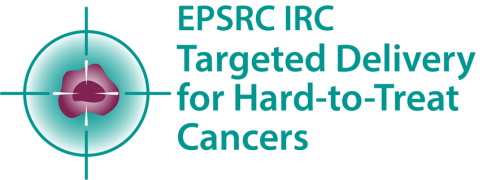
Manufacturing is a cross-cutting theme that runs through the IRC research programme. Dr Ronan Daly, Associate Professor in Science and Technology of Manufacturing, based at the Institute for Manufacturing at the University of Cambridge, leads this theme for the IRC, and sets out why asking questions and looking ahead is key to success.
The IRC research teams are developing breakthrough technologies for tackling three hard-to-treat cancers. The survival rates for these cancers – including mesothelioma and pancreatic cancer – remain very low and the need for new therapeutics is urgent.
In developing these technologies, the early research journey starts at the concept stage and continues to the point where there is a full prototype. Focus then turns to how to progress the technology to reach those who need to use it – the surgeon and patient. This requires commercial translation, which means thinking about how to make the technology scalable.
In short, design for manufacturing is just as important as design for both patient and surgeon. If a technology cannot be designed for manufacturing, it is not going to reach patients. Dr Ronan Daly, Associate Professor in Science and Technology of Manufacturing, IfM, University of Cambridge
This is the traditional route to clinic, and each of the IRC technologies traversing this route are at different points on the journey. Some are closer to being prototypes, some are at early-stage proof-of-concept and others, such as the hydrogels, are closer to the patient. What makes the IRC’s approach progressive is that all technologies are supported by manufacturing research throughout their development. This is key because if the underpinning scientific challenges presented when a technology moves to manufacturing are not faced during the research stage, it is too late to wait until something is about to be translated.
In short, design for manufacturing is just as important as design for both patient and surgeon. If a technology cannot be designed for manufacturing, it is not going to reach patients.
This is particularly significant in the design and development of early-stage technologies. For example, the IRC high-capacity nanoparticular delivery vehicles with targeting capabilities, including MOFs (metal-organic frameworks), are formulated to have the right sort of surface functionality, size distribution and concentration to circulate around the body and deliver drugs to a target. However, if the particles change their behaviour during injection into the body, when flowing around the body, or when trying to get across a membrane or barrier, then that early-stage research needs to be re-visited. The manufacturing team is helping researchers understand the different challenges from the point of being made to reaching their target. We are thinking ahead to identify risks and tackle them as soon as possible.
With an implantable electrophoretic delivery device, the system is already designed and the science is understood, but how can it be scaled up? How easy is it to make? How repeatable is the design? We also need to know how to measure if a device is working as predicted and test it in a way that is as similar to the in-use phase as possible. Manufacturing research enables us to look at this. We can build a system that allows the research team to make the technology, check how the drug is being delivered and whether the concentrations are as hoped. If not, then we can re-design it at an earlier stage in the journey to clinic. With the hydrogels we are helping look at the forces they will experience when the surgeon is using them so the materials development can ensure this will have no effect on drug delivery. When we start making something at scale, be it a device, gel or MOF, there will be some variations in manufacturing; what they are and the effect they have must be documented.
Taking a technology from a proof of concept to a repeatable device that will be safe and compliant with regulatory standards requires consideration of many different steps. Bringing a material or device to a patient, whether it’s for a trial or in clinic, means meeting very strict rules and regulations about the quality control of that process and documenting the provenance at each and every stage. This becomes easier if the research team has access to a GMP (good manufacturing practice) facility, but these are few and far between.
While the journey from lab to clinic takes time, the IRC’s approach is quite revolutionary. Traditionally all the technology development and proof of concept happens before consideration of any manufacturing questions. The IRC is applying these questions throughout the entire lab-to-clinic journey – and tackling some of them in advance. We hope our approach will help to shorten the journey time and deliver benefits to the patient sooner.


